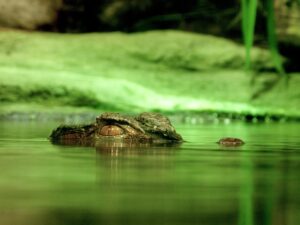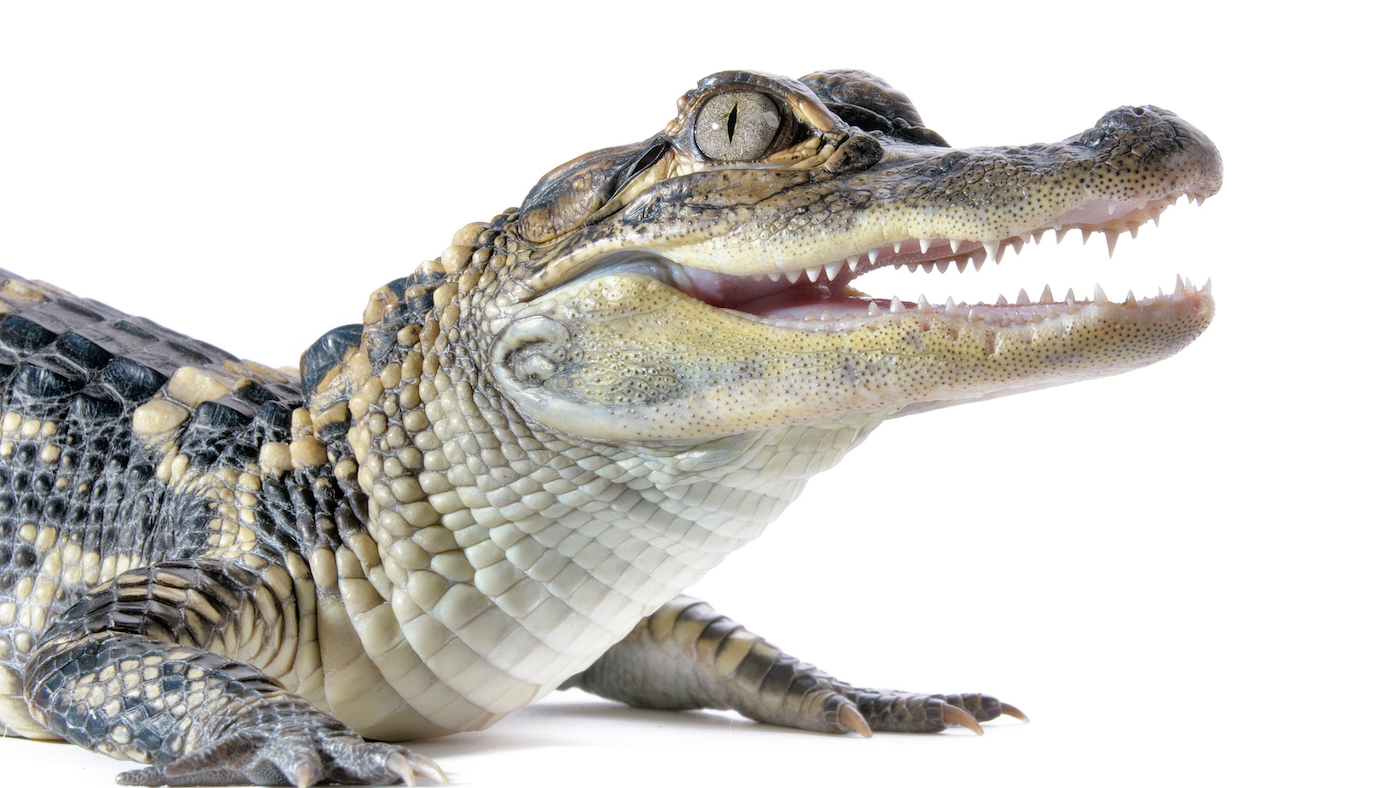Gilbert R. Gator, an Alligator Rescue
I ran the Charm City Reptile and Amphibian Rescue for 14 years (no longer in operation). Here is a story about an alligator rescue.
A little boy was fishing in a creek in Prince George’s County, Maryland, with his grandfather when something grabbed his bait and ran with it. After a little game of tug of war, they were amazed to discover that it was an alligator that had grabbed the bait. They were shocked and didn’t know what to do. The pair was making a commotion, which attracted people. Someone called Animal Control and eventually, they called us.
Animal Control wanted to place this animal as quickly as possible so they even brought the alligator to me. That is unheard of with shelters! It was especially odd because the shelter was a good hour’s drive away.
The animal control officer pulled up with a big van with a yellow bubble light on its roof. Inside there was a large dog crate with about three inches of water in the bottom. The gator was in the water! I explained that alligators are able to stay out of water for awhile. He didn’t need to bring it with water sloshing around the back of his van.
We tipped the sloshing dog crate into my yard to get rid of most of the water. The officer helped me carry the crate into the house, but backed away when it was time to remove the alligator.
I made an unusual request of the officer who was wearing what could be construed as a police uniform. Always worried about optics, I asked him to walk with me outside and shake my hand before he left. We did the prearranged handshake with big smiles, realizing how silly this was, while several neighbors suddenly came outside to snoop.
After he drove off, my Russian neighbor, who speaks limited English, asked me if I was in trouble with the police. He wondered if I needed help. I said, “It was just the animal police.” That didn’t put his mind at ease. I tried to explain he was bringing an animal, not taking any.
I named my new roomie Gilbert R. Gator. He showed signs of injury from his capture. Some teeth were missing. They do grow new teeth throughout their lives, but I’m sure it was painful having some of them knocked out. Just under the missing teeth were bruises that appeared to be from having a cat noose around its face. I’m sure the animal control officer wrestled with it causing the injuries. Gilbert must have thrashed around a lot because the bruises were pretty ugly and were visible for several weeks.
Jack Hubley, a former reporter who hosted a show, Wild Moments, contacted me about recording one on exotic strays. He came over and taped a segment with some of the rescues and featured Gilbert.

He did so many takes of his opening statement that Gilbert got used to being handled and just sat there. After about five minutes of activity, Gilbert used up all of his lactic acid and didn’t have the strength to fight. The reporter wasn’t happy about that; he wanted it to look more dangerous.
Gators have some interesting adaptations that make them wonderful educational tools. Whenever we get an American alligator, I try to take advantage of them and use them at any talks we have scheduled. They are amazing animals and should be admired, not tackled with cat nooses.
Alligators have very hard bony plates in the scales on their backs. These pieces of bone make their skin bumpy. The bumps help with camouflage and protect their skin.
Gators can be camouflaged in the water. They sit with only eyes and nostrils sticking out of the water — conveniently positioned on the tops of their heads — allowing them to sneak up on their prey. The eyes have a clear extra eyelid, called the nictitating membrane, that they use like goggles when swimming underwater. The thick, muscular tail acts like a rudder to guide the animal through the water and help them change direction. They will also swing that tail like a billy club as a defense. And yes, when the gator reaches four to five feet or bigger, it hurts when that tail hits you!

They have amazing jaw strength when they shut their mouths. You absolutely do not want to get a finger caught in there! When you just hold their mouth shut, it takes little force to make them keep it shut.
Alligators can hold their breath for long periods of time, giving them the opportunity to ambush their prey. They can stay underwater for up to an hour. That’s a long time to hold your breath!
These amazing reptiles have a flap of skin in their throats that allows them to swim with food in their mouths without choking on water. When an alligator opens its mouth, you can see that the tongue and the flap close off the opening to the throat.
I learned a lot from Gilbert R. Gator. This alligator rescue eventually went to a facility in Pennsylvania where they had a few other gators.
I’m a huge fan of alligators, but of course, I don’t want to make it seem like these enormous beasts make good pets. The males can get up to 15 feet in length. I don’t know of anyone who has room for something like that in their house unless they have a large indoor pool. However, they are adorable when they are small. I’ve worked only with gators up to about four to five feet. With alligators bigger than that, I’ll admit, things can get a little scary!
Please leave your comments below.
Read more by Holli Friedland.

